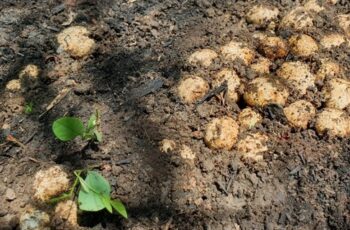Ad Blocker Detected
Our website is made possible by displaying online advertisements to our visitors. Please consider supporting us by disabling your ad blocker.
Growing vegetables in a shady garden can be a challenging task. Many gardeners struggle with finding the right vegetables that can thrive in low-light conditions.

25 Vegetables You Can Grow Easily in the Shade
In this article, we will provide you with some tips and tricks that will help you grow vegetables in the shade and achieve a bountiful harvest as well as 25 different vegetables that every garden can grow in the shade in their garden.
How to Grow Vegetables in the Shade: Tips and Tricks
Shade Levels:
Before you start planting vegetables in the shade, it’s essential to understand the different levels of shade. There are three types of shade: light, partial, and full shade. Light shade is an area that gets a few hours of direct sunlight each day, partial shade gets dappled sunlight, and full shade is a spot that never sees the sun. Once you identify the type of shade in your garden, you can choose the right vegetables that can thrive in that environment.
Right Vegetables:
Not all vegetables can grow in shady conditions. Vegetables that require a lot of sunlight, such as tomatoes, peppers, and cucumbers, are not suitable for shady gardens. However, vegetables such as lettuce, spinach, kale, broccoli, cauliflower, beets, radishes, and peas can thrive in low-light conditions. By choosing the right vegetables, you can ensure that your garden will produce a bountiful harvest.
Raised Garden Beds:
Raised garden beds are an excellent solution for growing vegetables in the shade. They can be placed in areas where there is more sunlight, such as near the edge of the garden or on a patio. By elevating the soil, you can also improve drainage, which is essential for growing healthy vegetables. Raised garden beds are also easy to manage, and they allow you to control the quality of the soil.
Soil Conditions:
Vegetables grown in the shade require well-draining soil that is rich in organic matter. The soil should be moist but not waterlogged, as too much moisture can lead to fungal diseases. Adding compost or aged manure to the soil can help improve its fertility and structure. Additionally, adding mulch to the soil can help retain moisture and suppress weed growth.
Watering:
Shaded areas tend to be cooler and more humid, which means that the soil can retain moisture for longer periods. However, this doesn’t mean that you should water less frequently. Vegetables still require consistent moisture to grow properly, so make sure to water your plants regularly. Watering in the morning or evening is ideal, as it prevents the water from evaporating quickly in the sun.
Companion Planting:
Companion planting is a technique where different plants are grown together to benefit each other. In a shaded garden, you can plant vegetables with different light requirements together. For example, you can plant lettuce and spinach in the same bed, as lettuce requires partial shade while spinach prefers full shade. Companion planting can also help repel pests and attract beneficial insects to your garden.
Organic Fertilizers:
Organic fertilizers such as compost, worm castings, and fish emulsion are great options for shaded gardens. They provide slow-release nutrients to the plants, which helps them grow strong and healthy. Organic fertilizers also improve the soil’s structure and fertility, which can lead to better yields.

